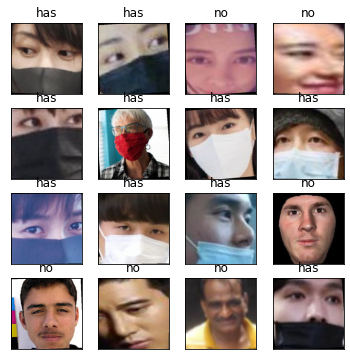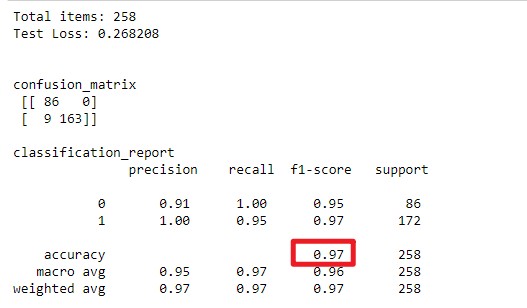The Mask-Wearing Detection a basic Convolutional Neural Network (CNN) is to detect if a person wear a mask. The system is implemented in Pytorch by a high school student.
- Help community to fight against COVID-19. There is an excellent system that is implemented in Tensorflow. It is possible to modify this project (Torch version) for IoT devices they have mentioned in the repository.
- Help new learners, such as high school students to learn AI in Pytorch.
- Learn AI. I have realized the CNN algorithm can be improved using other AI models. I am interested in testing Graph Neural Network (GNN) for image classifications.
The number of train set is 4324. The number of test set is 258. The number of validation set is 61. The dataset is collected from the following sources:
- Tensorflow-based face mask detection
- Mask Classifier
- Google search results
- The CNN-based face mask detection is implemented in Pytorch. The overall accuracy is 96.51% with F1-score of 97%. Note our F1-score outperforms the popular project on Github with F1-score 93%. The Confusion Matrix to evaluated the training and testing results is shown below.
- The training model is available here.
The notebook is divided into the following sections
- Import libraries
- numpy, panda, torch, torchvision, sklearn, matplotlib, Image, etc
- Utility functions for saving and loading models
- Show the project folder structure
- Pytorch provides a default folder structure for easy loading training and testing images
- Data pre-processing (Part 1 and Part 2)
- The model is able to identify the images correctly irrespective of the size and positioning of an image
- The transforming functions include transforms.Resize(), transforms.CenterCrop(), transforms.RandomRotation(), transforms.ToTensor(), etc
- Show example images after pre-processing
- To verify the training or testing images
- CNN model definition
- Convolution (conv)
- Pooling (pool)
- Fully connected (FC)
- Training
- The best model (only the best training model for now) is saved
- Testing
- Load the best model
- Testing
- Compute confusion matrix
- Validation
- validate manually (pick any one image at a time)
- validate randomly (randomly pick one from validation set at a time)

